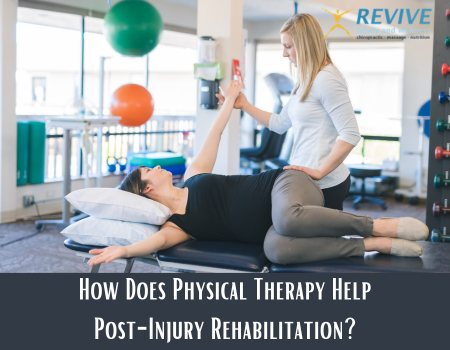
Physical therapy is a fundamental part of post-injury recovery, providing a thorough approach to reducing pain, restoring function, and preventing re-injury. By employing a variety of techniques and exercises, physical therapists help individuals regain their independence and quality of life.
Understanding the Role of Physical Therapy
Physical therapy is a specialized form of healthcare that focuses on rehabilitating the body to optimal function. After an injury, the body undergoes a healing process that can be supported and accelerated through targeted physical therapy interventions.
Key Components of Physical Therapy Rehabilitation
- Pain Management:
- Modalities: Physical therapists utilize various modalities, such as heat, cold, ultrasound, and electrical stimulation, to alleviate pain and reduce inflammation.
- Manual Therapy: Hands-on techniques like massage and joint mobilization can help release muscle tension and improve joint mobility.
- Pain Education: Understanding the nature of pain and developing effective coping strategies are essential components of pain management.
- Improving Range of Motion (ROM):
- Stretching Exercises: Gentle stretching helps restore flexibility and prevent stiffness, allowing for a full range of motion.
- Joint Mobilization: Manual therapy techniques can improve joint mobility and reduce pain.
- Progressive Exercise: Gradually increasing the range of motion through specific exercises helps restore normal function.
- Strengthening and Conditioning:
- Resistance Training: Building strength in the injured area and surrounding muscles is crucial for stability and preventing re-injury.
- Functional Exercises: Exercises that mimic everyday activities help prepare the body for returning to normal activities.
- Balance and Coordination: Improving balance and coordination is essential for safe and independent movement.
- Functional Restoration:
- Activities of Daily Living (ADLs): Physical therapists help patients regain the ability to perform everyday tasks such as dressing, bathing, and cooking.
- Return to Work or Sport: Gradual progression towards work or sports-specific activities is guided by the physical therapist.
- Injury Prevention: Education on proper body mechanics and techniques helps prevent future injuries.
The Rehabilitation Process
The rehabilitation process typically involves several phases:
- Initial Evaluation: A comprehensive evaluation of the injury is carried out, assessing strength, range of motion, pain levels, and functional limitations.
- Goal Setting: The therapist and patient collaboratively establish realistic and achievable goals for recovery.
- Treatment Plan Development: A personalized treatment plan is created based on the patient’s specific needs and goals.
- Progress Monitoring: Regular evaluations track progress and adjustments are made to the treatment plan as needed.
- Discharge Planning: As the patient progresses, the therapist prepares them for a smooth transition back to independent function.
Benefits of Physical Therapy
- Pain Reduction: Effective pain management enhances quality of life.
- Improved Function: Restoration of movement and ability to perform daily activities.
- Faster Recovery: Physical therapy can accelerate the healing process.
- Prevention of Re-injury: Proper strengthening and conditioning reduce the risk of recurrence.
- Enhanced Quality of Life: Return to normal activities and independence.
Physical therapy plays a vital role in the recovery process after an injury. By addressing pain, restoring function, and preventing re-injury, physical therapists help individuals regain their independence and enjoy an optimal quality of life. If you or someone you know has experienced an injury, consider consulting with a physical therapist to develop a personalized rehabilitation plan.


